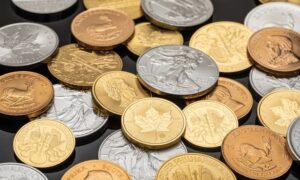There are a number of iconic and related assets in the global financial markets, but none are quite as striking as the US dollar (USD) and gold.
Not only are these two of the most widely traded assets in the financial marketplace, but they’ve also enjoyed a historically relevant and important relationship that has laid the platform for the global forex market of today.
The two assets also share an inverse relationship, but what does this mean and how do the prices of the USD and gold continue to fluctuate over time?
The Relationship Between the USD and Gold
Gold has always been a standard of value throughout history, both as a commodity and thanks to the tangible and secure store of wealth that it offers to investors.
Remember, during the so-called “Gold Standard” prior to World War II, the value of all major currencies was actually pegged to gold, while the precious metal continued to dictate the value of the dollar through the subsequent “Bretton Woods System” and until the early 1970s.
Interestingly, gold has always tended to perform well during times of economic tumult, making it excellent against inflation and a popular asset during a recession and as the purchasing power of currencies declines. Unlike the USD, the underlying value of gold is also governed by the basic principles of supply and demand, along with market sentiment as it fluctuates in line with wider conditions.
As for the USD, this tends to depreciate during a recession and as inflation rises, as its purchasing power declines and interest from overseas investors also dwindles.
You should note that fluctuations in the value of the greenback also impact directly gold prices, as this precious metal is dollar-denominated.
This helps to drive the inverse relationship that exists between the two assets and establishes them as ideal components of a diverse trading portfolio and social trading strategy.
What Factors Influence the Price of Gold and the USD?
In addition to USD fluctuations, the price of gold is largely driven by the fundamental principles of supply and demand.
So, the value of gold increases as traders look to invest in the asset during times of recession, while it depreciates accordingly when economies boom the global outlook is considerably more prosperous.
Gold prices can also be impacted by industrial demand, as gold remains a key driver of the jewelry industry.
As for the USD, two of the main determining factors are inflation and interest rates. As we’ve already touched on, inflation devalues currencies and impacts negatively demand, whereas incrementally higher interest rates (which are often used to counter the rising cost of living) increase the value of currencies and hike demand from overseas.
Understanding these factors is key for investors, especially if you’re to time your trades effectively and allocate your capital as effectively as possible.



































